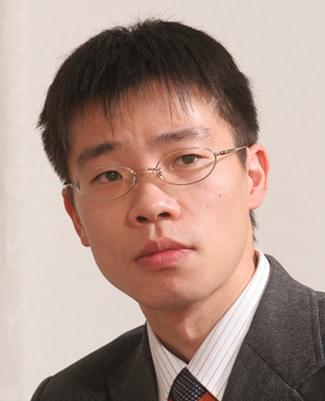Tomomichi Sugihara
Tomomichi Sugihara is a Japanese robotics researcher with a PhD in information and engineering from the University of Tokyo. He is engaged in research on walking control and state estimation, sensors, mechanisms, systems, and software for humanoid robots. He established a numerical inverse kinematics method for robots that does not depend on solvability by the Levenberg-Marquardt method, and also proposed a center of mass Jacobian matrix that includes implicit representations of non-actuated degrees of freedom and a dynamic transformation. He has held positions as a teaching assistant, assistant professor at the University of Tokyo, special associate professor at Kyushu University, associate professor at the Graduate School of Engineering at Osaka University, and researcher at Preferred Networks. Since July 2021, he has been a distinguished specialist of technology at Omron Corporation.
He is the chairman of the Humanoid Robot Committee and the vice chairman of the Open Intelligent Research Committee of the Robotics Society of Japan, and serves as the co-chair of the Technical Committee on Humanoid Robotics of the IEEE Robotics and Automation Society. As a Doraemon enthusiast, he has also written commentary, contributed, and written afterwords on the topic.
Abstract
A novel control scheme for biped robots to manipulate the ZMP three-dimensionally apart from the actual ground profile is presented. It is shown that the linear inverted-pendulum-like dynamics with this scheme can represent a wider class of movements including variation of the body height. Moreover, this can also represent the motion in aerial phase. Based on this, the foot-guided controller proposed by the authors is enhanced to enable the robots to locomote on highly uneven terrains and also to seamlessly transition between walking and running without pre-planning the overall motion reference. The controller guarantees the capturability at landing and defines the motion by a time-variant state feedback, which is analytically derived from a model predictive optimization. It is verified through some computer simulations.
